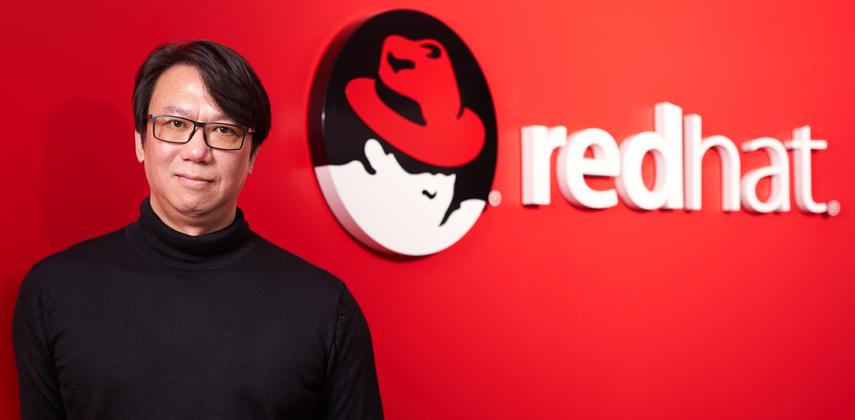Peter Man’s description of the business he’s in is clear and succinct, but it also represents a radical shift in the way enterprises everywhere are rethinking their approach to systems in the digital era.
“We are an IT company providing 100 per cent open source software solutions,” says Red Hat’s general manager for Hong Kong, Macau and Taiwan. “The beauty of it is that all the source codes we use are publicly available. We believe that is the development model for the future and the best way for innovation to happen.”
Unlike in the traditional software industry, the company owns no patents and is not intent on guarding any particular “trade secrets”. Instead, it provides a platform, often based on the Linux operating system, which supports applications needed to manage anything from stock exchange trading and airline bookings to manufacturing processes, banking transactions, shipping and logistics.
“Our enterprise customers don’t purchase the right to use the software; it comes from the worldwide open source community, which has millions of projects with different people contributing to the code,” Man says. “The value we provide is our support services. We sell subscriptions and provide incident and on-site assistance. In a perfect world nothing goes wrong, but we all know that won’t be the case. For any complicated system, there are issues to fix here and there, and we take care of that for customers.”
In this respect, he notes, the service is like insurance. The company has global support centres, with staff ready to solve problems and customise applications, but not run day-to day operations.
“The open source way lets companies tap into the latest and best technology. It gives them the agility and flexibility to move faster in their digital transformation.”
As the second of three children, Man grew up close to the old Kai Tak airport. His father was a civil servant and his mother a nurse from Macau.
“It was a traditional family, a very typical kind of set-up,” he says, noting that secondary school at La Salle College, where extracurricular activities — not lessons — were his main interest, proved a real catalyst for change. “We were encouraged to think independently and, as a result, I became a stronger individual, someone who wanted to do something for myself and for society.”
Having the chance to go to the US further broadened his horizons. He went on to attend Boise State University in Idaho, a choice influenced by the presence there of distant relatives descended from the generation of Chinese immigrants who went to build the railroads.
Shelving initial plans to study advertising design, Man switched to a four-year degree in computer science, graduating in 1992, and went on to a master’s in the same subject at Texas A&M. He won scholarships, which helped, but to pay his way he also cleaned dorms and bathrooms and, at grad school, did a lot of tutoring.
“At first, it was a big culture shock because neither of those places is popular with foreign students,” he says. “But the experience really shaped me.”
In the mid-90s, with the IT sector booming, he had no trouble landing a job as a software engineer with Hewlett-Packard. It took him back to Boise to a big facility manufacturing laser-jet printers where he worked as one the team on computer drives.
“It wasn’t rocket science,” he says. “I soon realised I didn’t want to do that for the rest of my life, just handling the technical stuff.”
So, instead, he joined Edge Technologies, an Australia-based computer distribution company, charged with setting up their operations in the US. The first big task was to identify a viable hub, which meant criss-crossing the Midwest to weigh up contender cities and pin down a deal.
“I had no relevant experience; they only took me on because a friend recommended me to the boss as someone they could rely on. Anyway, I packed a suitcase, jumped in my car, and drove around assessing the possible locations. Once I’d recognised that Cincinnati is in the middle of everything, I helped recruit teams, set up a distribution network, and then ran operations for about a year.”
In 1996, considering it mission accomplished, he decided to return to Hong Kong and develop a career in sales. The first step was four years in IBM’s industry solutions unit, where he learnt the fundamentals of effective selling and met many big-name customers.
Then, like others caught up in dotcom era optimism, he was persuaded to join a start-up doing ERP systems. It had venture capital funding and big plans, but the bubble burst, the money dried up and, for Man, it was “back to reality”. He soon found his feet, though, joining Novell to look after network operation systems and rising to general manager over the next 10 years.
In essence, it was the need for a new challenge that subsequently brought him to Red Hat in 2012. At the time, it was a small operation with only seven or eight staff locally, but he could see the potential and had no hesitation taking the plunge.
“Today, we can see that digital transformation is really heating up, and our customers already include some iconic players,” he says. “Within the company, we all know our objectives and we run a flat very flat organisation, promoting an open culture where everyone is listened to and feels the courage to speak up if they see ways we can improve.”
When time allows, Man is an avid reader of business, self-improvement and non-fiction titles, which helps clear his mind and understand how things happen in other industries.
“Overall, though, I consider myself more of a people person and I also love to draw and design,” he says. “In fact, I even did the interior design for the renovation of my apartment.”


